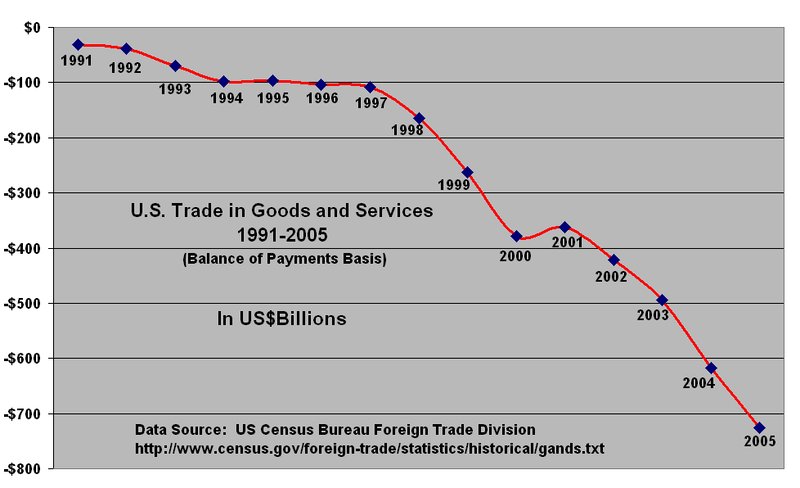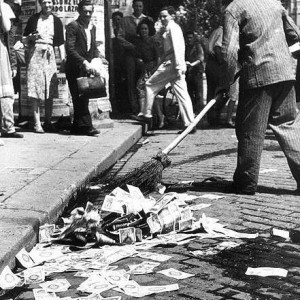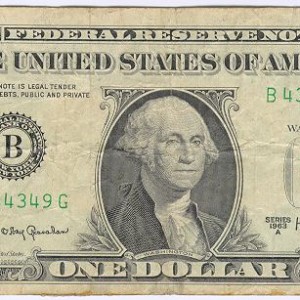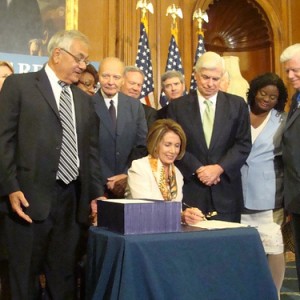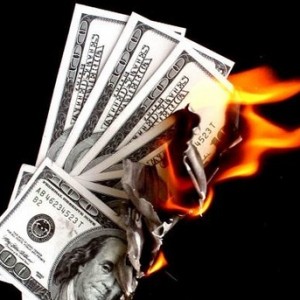 When they hear the word deficit, most Americans immediately think of the U.S. government budget deficit which is rapidly spiralling out of control. But that is not the only deficit which is ripping the U.S. economy to shreds. In fact, many economists commonly speak of the “twin deficits” that are destroying the U.S. financial system. So what is the “other deficit” that they are referring to? It is the trade deficit. Every single month, we buy much more stuff from the rest of the world than they buy from us. That means that every single month there is a massive outflow of wealth from the United States. Every single day, America becomes just a little bit poorer as Americans continue to run out and fill up their shopping carts with cheap plastic crap from China and dozens of other emerging economies. Not that trade is a bad thing. Trade can actually be a very good thing. But the gigantic trade imbalances that the United States has been running for years are absolutely bleeding us dry. Unfortunately, our politicians have just stood idly by as each month we continue to transfer massive amounts of wealth out of the United States.
When they hear the word deficit, most Americans immediately think of the U.S. government budget deficit which is rapidly spiralling out of control. But that is not the only deficit which is ripping the U.S. economy to shreds. In fact, many economists commonly speak of the “twin deficits” that are destroying the U.S. financial system. So what is the “other deficit” that they are referring to? It is the trade deficit. Every single month, we buy much more stuff from the rest of the world than they buy from us. That means that every single month there is a massive outflow of wealth from the United States. Every single day, America becomes just a little bit poorer as Americans continue to run out and fill up their shopping carts with cheap plastic crap from China and dozens of other emerging economies. Not that trade is a bad thing. Trade can actually be a very good thing. But the gigantic trade imbalances that the United States has been running for years are absolutely bleeding us dry. Unfortunately, our politicians have just stood idly by as each month we continue to transfer massive amounts of wealth out of the United States.
The U.S. Commerce Department recently announced that the U.S. trade deficit increased by 18.8 percent in June to $49.9 billion. Most analysts had expected the figure to be somewhere around 41 to 43 billion dollars.
In the month of June, imports rose to approximately $200 billion while exports fell to about $150 billion.
So can we afford to have a net outflow of 50 billion dollars each and every month?
Of course not.
We had so much wealth as a nation that we could afford to do this for a while, but the reality is that if this keeps up the rest of the world will eventually drain us dry.
So just how dangerous is the trade deficit? Well, world famous investor Warren Buffett once put it this way….
“The U.S trade deficit is a bigger threat to the domestic economy than either the federal budget deficit or consumer debt and could lead to political turmoil… Right now, the rest of the world owns $3 trillion more of us than we own of them.”
But very few Americans talk about the trade deficit.
Why?
Number one, it is because our education system has become so dumbed down that most Americans (especially among the younger generations) do not even know what the trade deficit is.
Number two, most Americans are so obsessed with frivolous things such as American Idol, Dancing With The Stars, Lady Gaga and their favorite sports teams that they couldn’t care less about thinking about real issues.
But they should be thinking about foreign trade, because it is literally destroying the nation.
What we have done is we have allowed the monolithic predator corporations that dominate our economy to slowly but surely move their operations to countries such as China and India where labor costs less than a tenth of what it does here. In the process, executives at those predator corporations are earning huge “performance bonuses” while millions of hard working middle class Americans are losing their jobs.
It is time to wake up. Have you ever wondered why it is so hard to find a decent job out there right now? Well, there is a good reason. The giant predator corporations have decided that they don’t really need us anymore.
Once upon a time, great American companies provided great American jobs for great American workers. We created the biggest middle class in the history of the world and great industrial cities like Detroit, Michigan were the envy of the world.
But have you been to Detroit lately?
One of the greatest cities in the United States has become a hellhole. The mayor says that nearly half the people there are out of work.
So what happened?
Did the giant corporations who used to make stuff in Detroit stop making stuff?
No, they are still making lots of stuff.
They just aren’t making their stuff in Detroit anymore.
Now, the truth is that it is really easy to jump on Detroit. It is a city that has been mismanaged for decades. But Detroit is far from alone.
All throughout the “rust belt” you can find other Detroits.
At this point many of you may be thinking that people living in places like that should just move.
That may be good advice, but the truth is that what has happened to Detroit is going to be happening everywhere. It is going to come to your own neighborhood soon enough. The giant predator corporations are going to continue to try to outsource and offshore every job they can.
Your job may be next.
Perhaps you should start learning about the trade deficit.
Perhaps you should start asking your representatives about it.
Just look at what all of this “free trade” and “globalism” did to our trade deficit between 1991 and 2005…..
Are you troubled by that chart?
You should be.
The U.S. economy is bleeding and the top politicians from both political parties act as if they could really care less.
What do you think is going to happen if tens of billions of dollars continue to pour out of the United States month after month after month?
The economic prosperity that we have all been enjoying is not guaranteed to last forever.
The system of world trade that has developed over the past few decades has provided us with gigantic mountains of cheap plastic crap, but it is not a good system for America or for middle class American workers.
Someday we will look back in horror at how incredibly stupid it was to ship our manufacturing base, our jobs and our prosperity to China.
But the American people have made their choices. They allowed the politicians to convince them that NAFTA, GATT and the WTO would be wonderful things for Americans.
They didn’t listen to the warnings about what would ultimately happen to our jobs and our economy.
They didn’t take the time to get educated about foreign trade and the exploding trade deficit.
So now we all get to pay the price.
